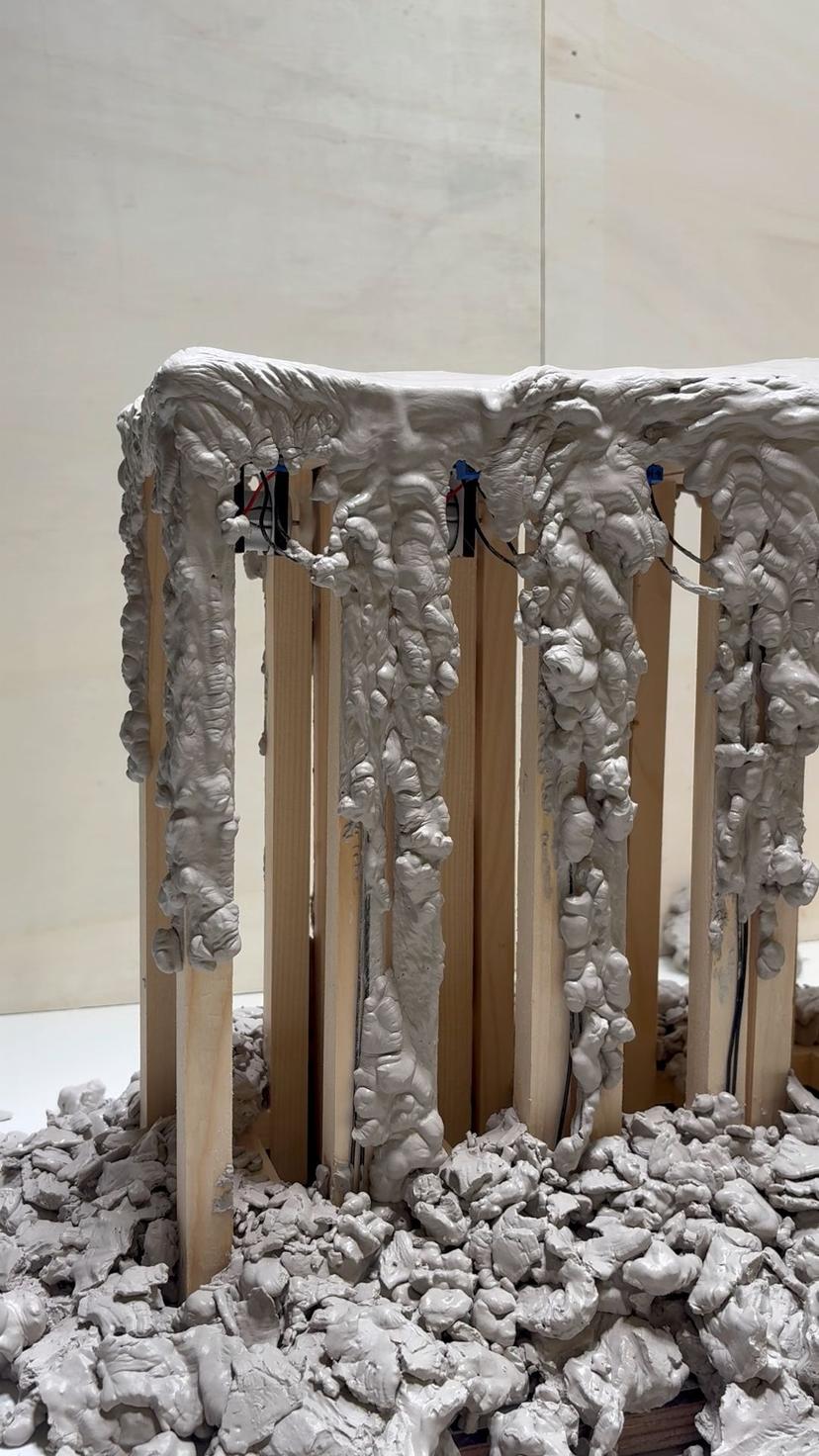Thixocymatics
Thixocymatics is a kinetic sculpture by Aldo Brinkhoff that explores the interaction between vibration, matter, and transformation. The work is based on the behaviour of thixotropic materials — substances whose viscosity changes over time under applied force, allowing them to alternate between solid and liquid states — and draws from the principles of cymatics, the study of how vibrations generate patterns. In contrast to traditional cymatic experiments, which take place within a flat liquid plane, Thixocymatics expands this process into a three-dimensional space. The work was developed in collaboration with Associate Professor Eduardo Mendez of TU Delft, whose research focuses on Functional Soft Matter. Using tools from the world of construction, particularly concrete formwork, the artist manipulates a block of thixotropic calcium. The material resists stability, continuously reshaping itself into an evolving, unstable landscape. Through this perpetual flux, Thixocymatics embodies a delicate balance between order and collapse, control and emergence, structure and fluid transformation.
About Aldo Brinkhoff
Aldo Brinkhoff is a kinetic artist who works with an intuitive approach to chemistry to explore, isolate, and amplify natural phenomena. Fascinated by the uncontrollable and transformative nature of chemical processes, he navigates their complexity to create systems that give rise to transient spatial experiences. By combining principles of chemistry with scenographic composition, Aldo constructs environments that are in constant motion: alive, responsive, and unpredictable. His work Thixocymatics exemplifies this approach: a kinetic sculpture developed in collaboration with a scientist that investigates the fragile threshold between order and collapse. Using tools from construction, such as concrete formwork, Aldo designed an instrument that delicately manipulates a block of thixotropic calcium, resulting in a perpetually shifting, unstable landscape that resists fixation and continuously reshapes itself.

